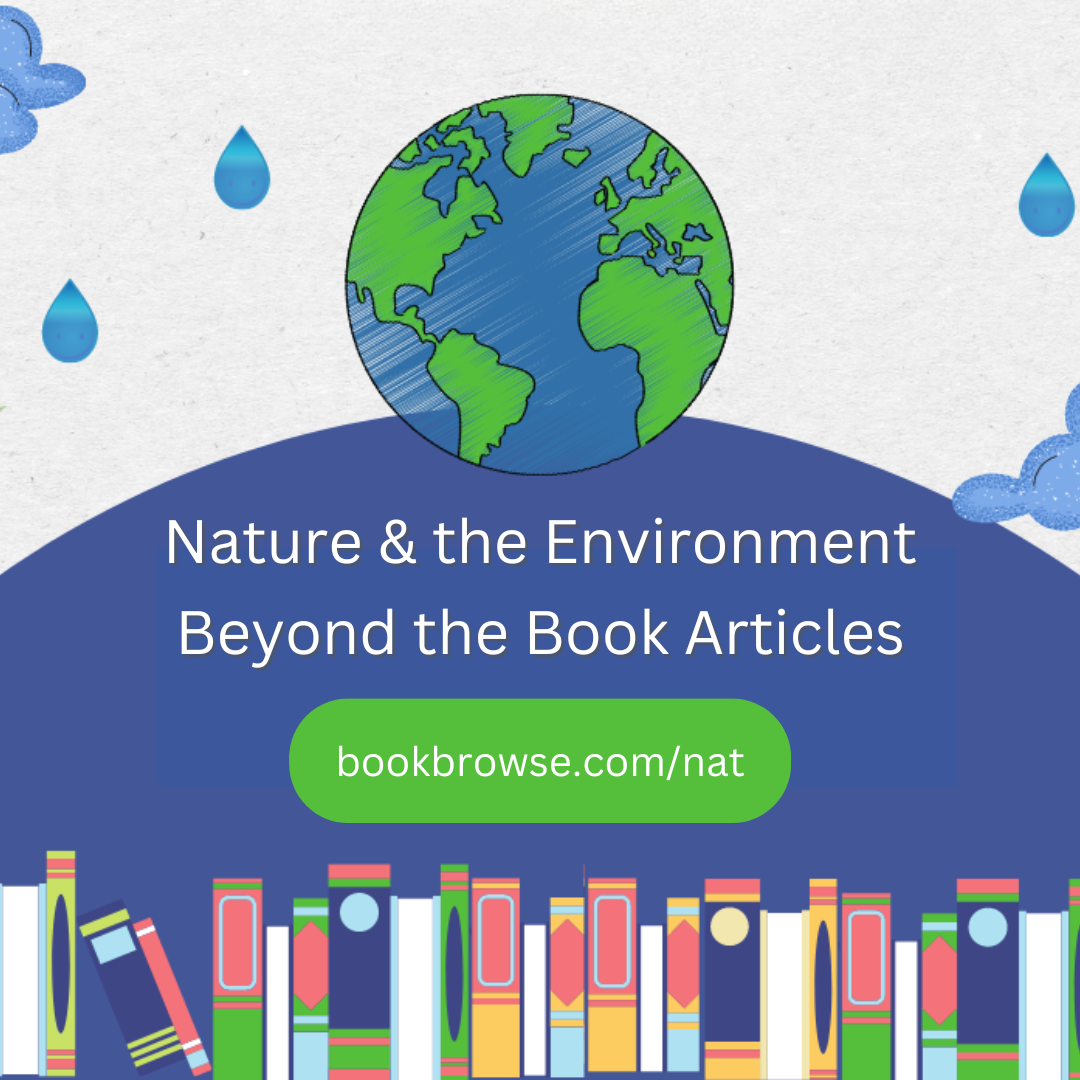
This spring, as you step out to your local weekend farmers market, closest beach or favorite hiking trail, you may want to take a moment to reflect on the living world around you. At BookBrowse, our Nature and the Environment category of Beyond the Book articles covers the ways humans are intimately tied to and dependent upon the plants and animals we share the planet with, the responsibility we have towards them in turn, and additional topics involving environmental politics, biodiversity, natural wonders and much more. Below is a small sampling of freely available articles for you to enjoy.
Every "beyond the book" article we write accompanies a book we review and focuses on a cultural, historical or contextual topic related to that book. These pieces are a great way to discover new titles and learn about all kinds of subjects! BookBrowse members get full access to thousands of Beyond the Book articles across nine categories, including Nature and the Environment.
Most of us probably think of tide pools as the small bodies of water between rocks at the beach, but tide pools can also be large, and sometimes they are manually created, as Adam Nicolson does in Life Between the Tides, by either breaking away at existing rock to create a depression, or by building a wall of sorts that traps the seawater in at high tide and becomes a pool when the tide recedes. It is quite common for tidal pools — both natural and human-made — to be used by people for swimming. They can be found anywhere there are coastlines around the world. (Jennifer Hon Khalaf)
In Richard Powers' Bewilderment, nine-year-old Robin Byrne is distressed at the plight of endangered species and commits to painting as many of them as he can, as well as undertaking one-kid protests outside the Wisconsin statehouse and in the nation's capital. He specifically emulates a character called "Inga Alder," who is clearly based on Greta Thunberg. Thunberg, a Swedish teenager, has been in the public eye since 2018, when she encouraged students around the world to join her on school strikes, walking out of their classrooms on Fridays to draw attention to the urgency of the climate crisis. (Rebecca Foster)
The central character in Nathan Harris's The Sweetness of Water decides to grow peanuts on his land in Reconstruction-era Georgia.
Although peanuts are often considered nuts, as the name would suggest, they're actually legumes like beans or peas. Legumes, according to the Peanut Institute, are defined by their edible seeds enclosed in pods and "provide the best source of concentrated protein in the plant kingdom." Along with other legumes, peanuts have become an important food worldwide as a result of their high nutritional value. (Kim Kovacs)
When I picked up Tony Hiss's Rescuing the Planet, I expected to find stories about great forests and vulnerable wetlands and vast mountain landscapes. I definitely did not expect to encounter a story about my own town of Belmont, Massachusetts, an inner suburb of Boston. But that's exactly what happened when I started reading Hiss's narrative about the conservation success story of the Waverly Oaks (literally just down the street from my house) and the broader movement they inspired. (Norah Piehl)
In James McBride's novel Deacon King Kong, Sportcoat spends his Wednesdays helping an elderly Italian woman scour the parking lots of their Brooklyn neighborhood for plants — weeds, really — that she feels compelled to "rescue." One plant she obsesses about finding is pokeweed, a poisonous shrub she believes can help lower her blood pressure if prepared correctly. (Kim Kovacs)
In Christy Lefteri's novel, The Beekeeper of Aleppo, the protagonist is a Syrian refugee seeking asylum in England. The novel brings to life the heart-wrenching challenges refugees endure as they flee their home country for a better life, but it also vividly sketches the protagonist's past life as a beekeeper in pre-war Syria.
Since antiquity, humans have had a unique relationship to bees and the honey they have been making for millions of years. (Kim Kovacs)
Barn 8 recounts the formulation and execution of a plan to rescue (or, depending on your viewpoint, steal) nearly one million hens from an egg farm. Interspersed with the plot are ruminations on the lives, personalities, evolution and intelligence of these animals that the author obviously regards highly. So, how smart are chickens?
A surprising number of studies have been conducted on this subject. (Lisa Butts)
Additional Beyond the Book articles in our Nature and the Environment category available to our members include The Białowieża Forest (relating to Jennifer Croft’s The Extinction of Irena Rey), Controlled Prairie Burning for Maintenance (relating to Nathan Hill’s Wellness), Keep America Beautiful and the "Crying Indian" Ad (relating to David Lipsky’s The Parrot and the Igloo) and many more. Join today for full access!